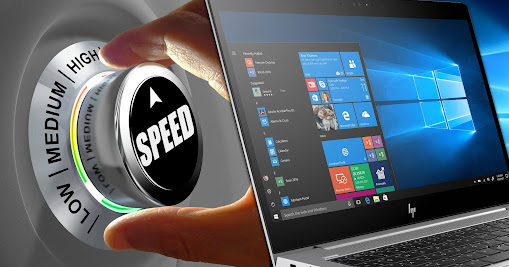A Comprehensive Guide: How to Speed Up Your Computer || Tech Guiide BD || 2024
In today's fast-paced digital world, a slow computer can be a significant source of frustration. Whether you're a professional needing efficient work tools or a casual user looking for smooth browsing and gaming experiences, a sluggish computer can disrupt your workflow and drain your patience. Fortunately, there are various methods to optimize your system's performance and make it run faster. From basic maintenance tasks to advanced optimizations, this comprehensive guide will walk you through the steps to speed up your computer.
Understanding the Causes of Slowdowns
Before diving into solutions, it's essential to understand what causes your computer to slow down. Several factors can contribute to sluggish performance:
Hardware Limitations: Aging hardware components, insufficient RAM (Random Access Memory), or a slow processor can significantly impact your computer's speed.
Software Issues: Bloated software, unnecessary startup programs, and malware can consume system resources and slow down your computer.
Storage Problems: A nearly full hard drive or a fragmented disk can lead to slower read and write speeds, affecting overall performance.
Overheating: Excessive heat buildup due to poor ventilation or dust accumulation can cause components to throttle, reducing performance.
Basic Maintenance Tasks
Start by performing these fundamental maintenance tasks to ensure your computer is running smoothly:
Disk Cleanup: Use the built-in Disk Cleanup tool (Windows) or Disk Utility (macOS) to remove temporary files, cache, and unnecessary system files.
Defragment Your Hard Drive: If you're using a traditional hard disk drive (HDD), defragmenting it can improve file access speeds by rearranging fragmented data.
Update Software and Drivers: Regularly update your operating system, drivers, and software to ensure compatibility and security patches.
Disable Startup Programs: Prevent unnecessary programs from launching at startup to reduce boot time and free up system resources. You can manage startup programs through Task Manager (Windows) or System Preferences (macOS).
Clear Browser Cache: Periodically clear your browser's cache, cookies, and history to improve browsing speed and free up disk space.
Advanced Optimizations
For more significant performance improvements, consider these advanced optimization techniques:
Upgrade Hardware: If your computer's hardware is outdated or insufficient for your needs, consider upgrading components such as RAM, SSD (Solid State Drive), or the CPU.
Upgrade to an SSD: Replace your traditional HDD with a solid-state drive (SSD) for significantly faster boot times, application launches, and file transfers.
Optimize Virtual Memory: Adjust your system's virtual memory (swap space) settings to ensure optimal performance. Allocate enough space on your hard drive to act as virtual memory, but avoid setting it too high, which can lead to disk thrashing.
Manage Background Processes: Identify and close resource-intensive background processes using Task Manager (Windows) or Activity Monitor (macOS). Be cautious not to end essential system processes.
Use Lightweight Software: Opt for lightweight alternatives to resource-heavy software applications. For example, use a lightweight text editor instead of a bloated word processor for simple tasks.
System Tweaks and Settings
Fine-tune your computer's settings for better performance:
Adjust Power Settings: Customize your power plan settings to prioritize performance over energy savings. Choose the "High Performance" mode in Windows or adjust settings in macOS to optimize performance.
Disable Visual Effects: Turn off unnecessary visual effects such as animations, transparency, and shadows to reduce the strain on your system's GPU (Graphics Processing Unit).
Limit Background Services: Disable or limit background services and applications that consume system resources unnecessarily. Review your system settings and installed software for options to disable background tasks.
Keep Your System Clean: Regularly clean your computer's exterior and interior to prevent dust buildup, which can cause overheating and performance throttling.
Monitor Temperature: Use monitoring software to keep an eye on your system's temperature and take appropriate measures to prevent overheating, such as improving ventilation or cleaning dust filters.
Security Measures
Ensure your computer's security without compromising performance:
Use Antivirus Software: Install reputable antivirus software to protect your system from malware, viruses, and other security threats. However, avoid using multiple antivirus programs simultaneously, as they can conflict and slow down your system.
Enable Firewall Protection: Activate your computer's firewall to prevent unauthorized access to your system and network.
Regular Updates and Patches: Keep your operating system and software up to date with the latest security patches to address vulnerabilities and protect your system from exploits.
Conclusion
A slow computer can hinder productivity and diminish user experience, but with the right tools and techniques, you can significantly improve its performance. By following the steps outlined in this guide, from basic maintenance tasks to advanced optimizations, you can ensure that your computer runs smoothly and efficiently. Remember to regularly monitor your system's performance and make adjustments as necessary to keep it running at its best. With a little effort and know-how, you can enjoy a faster and more responsive computing experience.








